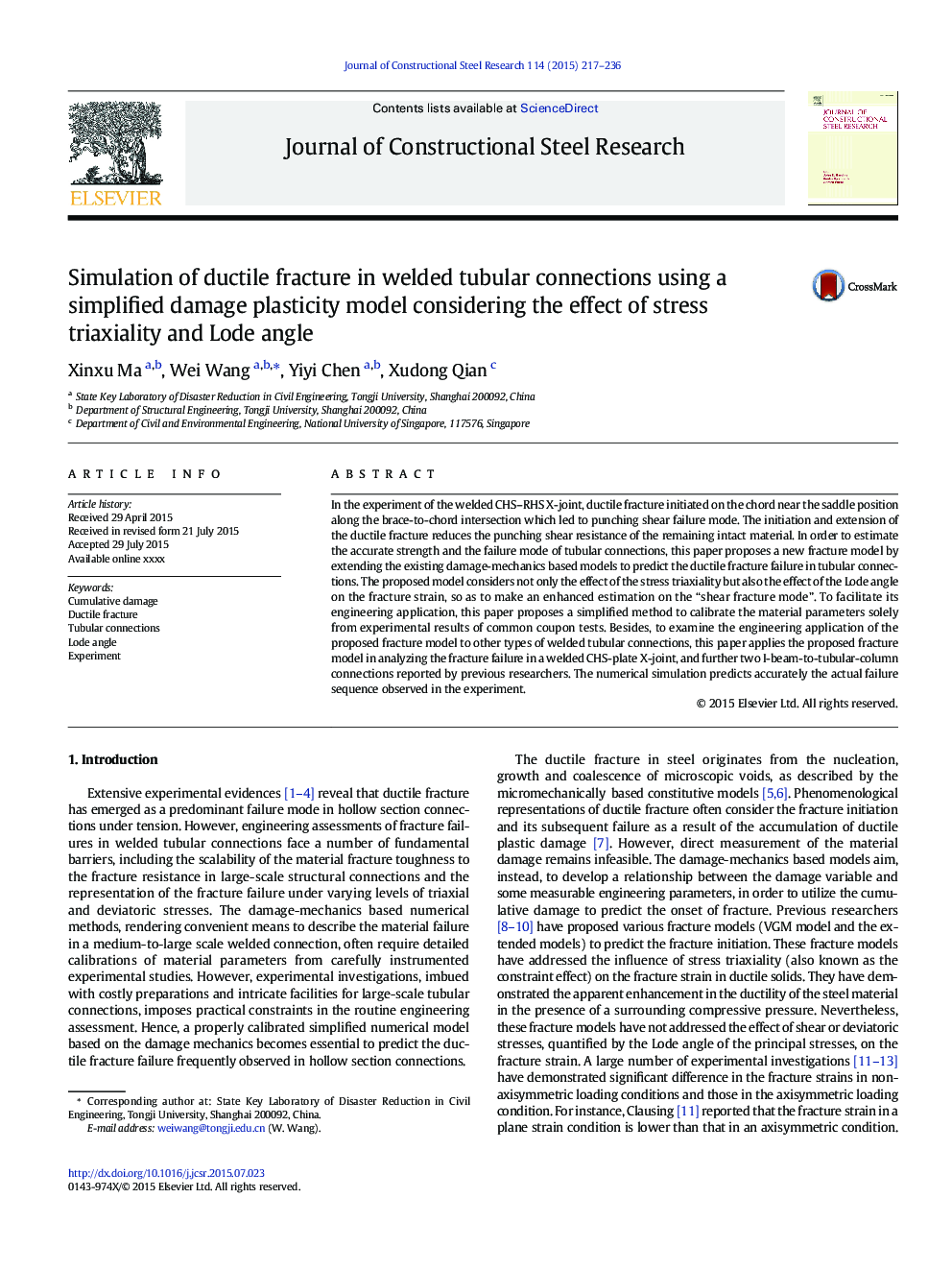| Article ID | Journal | Published Year | Pages | File Type |
|---|---|---|---|---|
| 6751735 | Journal of Constructional Steel Research | 2015 | 20 Pages |
Abstract
In the experiment of the welded CHS-RHS X-joint, ductile fracture initiated on the chord near the saddle position along the brace-to-chord intersection which led to punching shear failure mode. The initiation and extension of the ductile fracture reduces the punching shear resistance of the remaining intact material. In order to estimate the accurate strength and the failure mode of tubular connections, this paper proposes a new fracture model by extending the existing damage-mechanics based models to predict the ductile fracture failure in tubular connections. The proposed model considers not only the effect of the stress triaxiality but also the effect of the Lode angle on the fracture strain, so as to make an enhanced estimation on the “shear fracture mode”. To facilitate its engineering application, this paper proposes a simplified method to calibrate the material parameters solely from experimental results of common coupon tests. Besides, to examine the engineering application of the proposed fracture model to other types of welded tubular connections, this paper applies the proposed fracture model in analyzing the fracture failure in a welded CHS-plate X-joint, and further two I-beam-to-tubular-column connections reported by previous researchers. The numerical simulation predicts accurately the actual failure sequence observed in the experiment.
Related Topics
Physical Sciences and Engineering
Engineering
Civil and Structural Engineering
Authors
Xinxu Ma, Wei Wang, Yiyi Chen, Xudong Qian,
